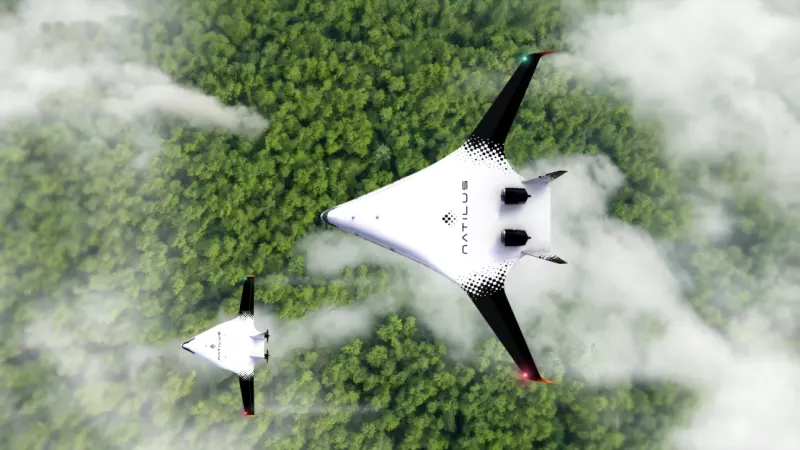San Diego-based Natilus built the Horizon, which is also meant to carry about 200 passengers and uses 30 percent less fuel
Due to increasing global demand for air travel, carbon emissions from aviation have been growing faster than emissions from rail, road or shipping in recent decades.
The solutions to reverse the above situation, they are moving at a slow pace: Ta sustainable aviation fuelswhich can reduce emissions per flight by 80% when produced and used correctly, could represent the 2/3 of the reduction in carbon emissions required for aviation to reach its net zero goal in 2050. However, at best sustainable aviation fuels will account for just 0.53% of total aviation fuel use in 2024, far short of the levels needed to has substantial results.
While the airlines and regulatory authorities are struggling to come up with ideas for getting rid of carbon emissions, some engineers are suggesting that an entirely new type of aircraft is needed to save fuel and therefore emissions. This does away with the traditional “tubes and wings” design that was its mainstay of commercial aviation for 100 yearsfor the benefit of what is called “blended wing body”, in which the wing area takes up a large part of the fuselage and creates a distinctive looking aircraft.
In 2020, Airbus built a small-scale, remote-controlled blended wing demonstrator to test a design the company said could save up to 20% of fuel. In 2023, California-based JetZero announced plans for a similarly designed aircraft with a capacity of more than 200 passengers and an ambitious goal of being in service by 2030.
Now, the Natilus San Diego-based has joined the fray with the Horizon, a blended-wing aircraft also meant to carry about 200 passengers, while producing half the carbon emissions and using 30 percent less fuel than today’s Boeing 737 and Airbus A320 aircraft — the models that aims to compete.
“With all the challenges I think the industry is facing, for the first time, I think there’s an opportunity to build an airplane that’s on par with Boeing or Airbus” says Aleksey Matyushev, CEO and co-funder of Natilus.
A new passenger experience
Natilus, which was founded in 2016, previously announced a cargo-only drone called the Kona that also uses the same innovative shape. Matyushev says the blended wing plane design originated in the 1990s from McDonnell Douglas, a major American aerospace manufacturer that merged with Boeing in 1997. Boeing never brought a blended wing plane to market, but studied the concept. and produced a prototype drone, the X-48.
According to Natilus, Kona has received 400 orders and a full-scale model will be built and flown within the next two years. Much of the technology will then be transferred to the Horizon, which will have a regular cockpit and crew and, according to Matyushev, will be in service by 2030 – an extremely ambitious goal, as it would be unprecedented for a brand new aircraft to escape from the design to full certification in just six years.
“One of the challenges with blended wing aircraft design is stability and control“, he explains. “I think that’s where McDonnell Douglas and Boeing really stumbled — how do you stabilize the airplane?”
The much larger fuselage, which no longer looks like a tube, opens up possibilities for different layouts on board. “We have approx 30% more surface area than a traditional airplane”, explains Matyushev. “So what I think a lot of our customers are thinking about is an upgraded passenger experience. Could you bring back the living room? There are other spaces on the plane that you could create for those long flights?”
Not everything in Horizon will be new. For example, the plane will use existing engine technology, leaving no room for hydrogen or electric power options. “There’s a classic adage in aviation – never put a brand new engine in a brand new airplane. This is very dangerous”, says Matyushev. For the same reason, Horizon is designed to fit a Boeing 737 or Airbus A320 anywhere, without requiring a change in airport infrastructure.
Source :Skai
I am Terrance Carlson, author at News Bulletin 247. I mostly cover technology news and I have been working in this field for a long time. I have a lot of experience and I am highly knowledgeable in this area. I am a very reliable source of information and I always make sure to provide accurate news to my readers.











